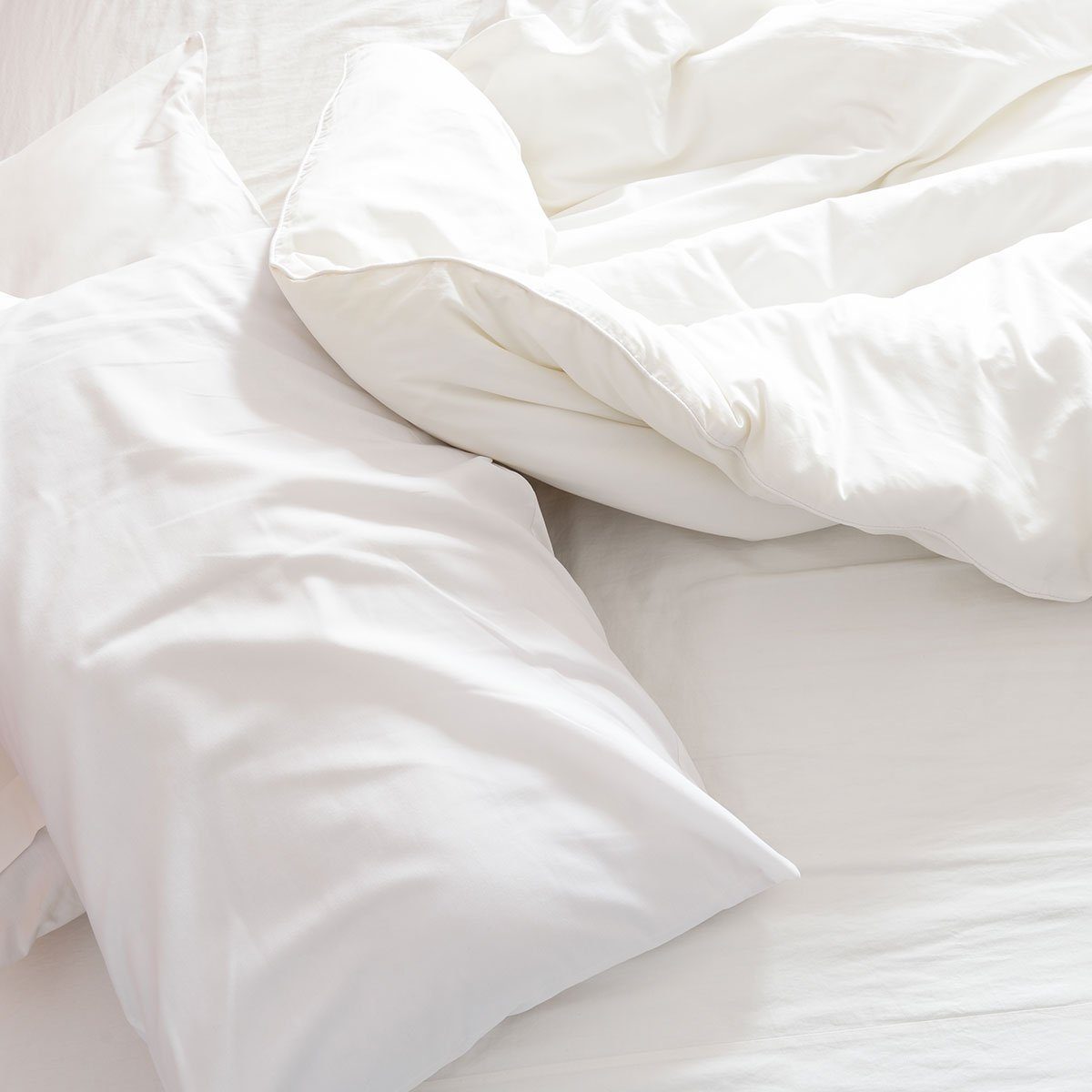How to Effectively Disinfect Sheets
Cleaning sheets is a great way to eliminate germs and bacteria. Learn how to properly disinfect them here.

How to handle contaminated bed sheets
Even in normal conditions, bed sheets collect a staggering amount of germs and bacteria and should be washed at least once a week. But once they come into contact with a sick person, that laundering needs to be handled with an even higher level care and attention.
That extra care starts with how the bed sheets are handled, even before they make it into the washing machine.
“If you have disposable gloves handy, it’s suggested that you wear those while performing these tasks,” said Kathy Turley of Home Clean Heroes. “If you don’t have gloves, be sure to thoroughly wash your hands after touching the sheets and towels, and then follow up with hand sanitizer that is at least 60 per cent alcohol based.”
Turley also recommends that people avoid placing their dirty sheets in a laundry basket, as anything that touches the sheets could be contaminated by any germs they carry. Germs and bacteria can survive on objects for up to a few days. So instead of risking contaminating a laundry basket, bring your sheets to the laundry room in an inside-out pillowcase.
“Why put the sheets inside a pillowcase? You want to avoid `hugging’ the sheets by carrying them in your arms/close to your body when walking to the laundry room,” said Turley.
How to wash contaminated sheets
Once you’ve brought the sheets into the laundry room, here’s how to wash and disinfect them:
- Empty the sheets from the pillow case into the washing machine and then toss the pillow case in as well.
- Before touching any of the knobs or buttons on your washing machine, remove your plastic gloves and wash your hands.
- Wash the sheets on the highest temperature setting possible with laundry detergent and a disinfectant (more on that below).
- Dry the sheets on high heat.
What works as a sheet disinfectant?
If you’re going to use chlorine bleach to disinfect sheets, it’s important to follow the standard best practices for using bleach in the laundry. If your laundry machine has a built-in bleach dispenser, go ahead and use it. If not, dilute 3/4-cup of bleach with one quart of water and add it in five minutes into the wash cycle.
“Chlorine bleach with 5.25 per cent to 6.15 per cent concentration of sodium hypochlorite is an effective disinfectant,” said Dean Davies, cleaning supervisor of Fantastic Services.
If you don’t have bleach on hand, or are working with coloured sheets you don’t want to ruin, Davies said that pine oil works great as an alternative disinfectant. He recommended products with as high a concentration of pine oil as possible, which will eliminate bacteria and germs most effectively.
Final steps
There are still a few more things to do once you pull your freshly-laundered sheets out of the dryer. Quickly cycle the washing machine to eliminate the risk of any lingering germs or bacteria contaminating future loads of laundry.
“To disinfect the washing machine’s drum, simply empty the appliance, pour one cup of chlorine bleach to the empty washer drum and set the water temperature for the hottest, heavy-duty settings,” said Davies.
Finally, while your washing machine drum is cleaning itself, you might as well take the time to wash your hands again!



